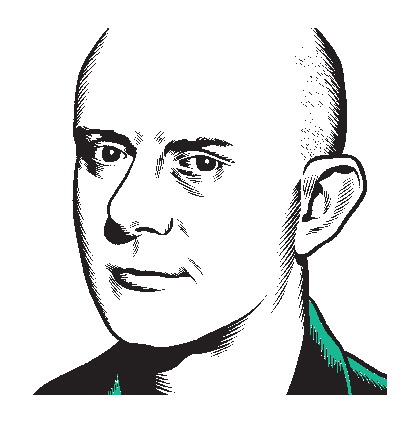BOOKS BOUGHT:
- Elizabeth and Hazel: Two Women of Little Rock —David Margolick
- A Spool of Blue Thread —Anne Tyler
- Lives in Writing —David Lodge
- The Story of a New Name —Elena Ferrante
- Fifty Shades of Grey —E L James
- This Is the Story of a Happy Marriage —Ann Patchett
BOOKS READ:
- My Brilliant Friend —Elena Ferrante
- Clothes, Clothes, Clothes, Music, Music, Music, Boys, Boys, Boys —Viv Albertine
- Leaving the Atocha Station —Ben Lerner
- This Is the Story of a Happy Marriage —Ann Patchett
The last time I wrote for these pages, I tried to interest you in several books that were both abstruse and astonishingly insular: a memoir by an English politician you’ve never heard of, a book about Arsenal’s record-breaking 2003–04 season, a spoof autobiography of a cartoon soccer player, and so on. To cut a long story short, Words Have Been Had, and, reluctantly, I have had to resort to discussing books that you have either read or have some interest in reading at some point in the future. Disappointing, I know, but I haven’t given up the fight—rest assured that this column will eventually return to shining a dim light into crannies you have absolutely no desire to investigate. And, for the record, I think the Polysyllabic Spree, the nine desperately ambitious but vegetarian media mavens who run the Believer, are wrong, anyway: I could write about Elena Ferrante every month for a thousand years, and we still wouldn’t reel in the Directioners or the Swifties we’re apparently trying to interest now. And it’s not just Ferrante, I suspect—they’re uninterested in any modern European fiction in translation. But that’s the Spree for you, whose belief in the transformative power of literature is touching.
I am not the only one who has made links between Ferrante and Karl Ove Knausgaard. (I have done it in my head, and I have done it here, in this column, in the previous sentence.) A writer in the Guardian did it, and a writer in the New Republic, and another writer did it in an email while expressing her enthusiasm for Ferrante’s Brilliant Friend trilogy. There are some obvious comparisons. Both have embarked on ambitious multi-novel projects that seem, at least, to contain elements of autobiography… Except, of course, that once you have begun that sentence (and it’s hard to avoid it, if you want to talk about Knausgaard and Ferrante in the same paragraph), you’re lost. Knausgaard’s books are dizzyingly, sometimes exasperatingly detailed autobiography—we know that because it’s clear...
You have reached your article limit
Sign up for a digital subscription and continue reading all new issues, plus our entire archives, for just $1.50/month.
Already a subscriber? Sign in






